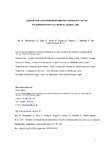Mostrar o rexistro simple do ítem
Climatic and lacustrine morphometric controls of diatom paleoproductivity in a tropical Andean lake
| dc.contributor.author | Bao, Roberto | |
| dc.contributor.author | Hernández, Armand | |
| dc.contributor.author | Sáez, Alberto | |
| dc.contributor.author | Giralt, Santiago | |
| dc.contributor.author | Prego, R. | |
| dc.contributor.author | Pueyo Mur, Juan José | |
| dc.contributor.author | Moreno Caballud, Ana | |
| dc.contributor.author | Valero Garcés, B. L. | |
| dc.date.accessioned | 2015-11-23T16:16:46Z | |
| dc.date.issued | 2015-12 | |
| dc.identifier.citation | Bao, R., Hernández, A., Sáez, A., Giralt, S., Prego, R., Pueyo, J.J., Moreno, A., Valero-Garcés, B.L., 2015. Climatic and lacustrine morphometric controls of diatom paleoproductivity in a tropical Andean lake. Quaternary Science Reviews 129, 96-110. doi: 10.1016/j.quascirev.2015.09.019 | es_ES |
| dc.identifier.issn | 1873-457X | |
| dc.identifier.uri | http://hdl.handle.net/2183/15589 | |
| dc.description.abstract | The coupling of lake dynamics with catchment biogeochemistry is considered the key element controlling primary production in mountain lakes at time scales of a few decades to millennia, yet little is known on the impacts of the morphometry of lakes throughout their ontogeny. As Lake Chungará (Central Andean Altiplano, northern Chile) experienced long-term lake-level fluctuations that strongly modified its area:volume ratio, it is an ideal system for exploring the relative roles that long-term climatic shifts and lake morphometry play on biosiliceous lacustrine productivity. In this paper, we review previous data on the percent contents of total organic carbon, total inorganic carbon, total nitrogen, total biogenic silica, isotopic composition of organic matter, carbonates, and diatom frustules, as well as data on the abundance of the chlorophycean Botryococcus braunii in this lake for the period 12,400-1,300 cal yr BP. We also include new data on organic carbon and biogenic silica mass accumulation rates and the diatom assemblage composition of an offshore core dated using 14C and U/Th. Biosiliceous productivity in Lake Chungará was influenced by shifts in allochthonous nutrient inputs related to variability in precipitation. Humid phases dated at approx. 12,400 to 10,000 and 9,600 to 7,400 cal yr BP coincide with periods of elevated productivity, whereas decreases in productivity were recorded during arid phases dated at approx. 10,000 to 9,600 and 7,400 to 3,550 cal yr BP (Andean mid-Holocene Aridity Period). However, morphometry-related in-lake controls led to a lack of a linear response of productivity to precipitation variability. During the late Glacial to early Holocene, lowstands facilitated complete water column mixing, prompting episodic massive blooms of a large centric diatom, Cyclostephanos cf. andinus. Thus, moderate productivity could be maintained, regardless of aridity, by this phenomenon of morphometric eutrophy during the early history of the lake. The subsequent net increase in lake level introduced modifications in the area of the epilimnion sediments versus the total volume of the epilimnion, preventing complete overturn. Surpassing a certain depth threshold at approx. 8,300 cal yr BP caused cessation of the morphometric eutrophy conditions associated with Cyclostephanos cf. andinus superblooms. After 7,300 cal yr BP, the lake experienced a decrease in biosiliceous productivity and a change of state that involved a stronger dependence on 3 precipitation variability, with a lesser contribution of diatoms to the total primary productivity. Our results show that the interpretation of lacustrine paleoproductivity records as paleoclimatic archives needs to take into account the effects of changes in the epilimnion sediment area to epilimnion volume ratio in association with lake ontogeny. | es_ES |
| dc.description.sponsorship | Ministerio de Ciencia e Innovación; BTE2001-3225 | es_ES |
| dc.description.sponsorship | Ministerio de Ciencia e Innovación; BTE2001-5257-E | es_ES |
| dc.description.sponsorship | Ministerio de Ciencia e Innovación; CGL2004-00683/BTE | es_ES |
| dc.description.sponsorship | Ministerio de Ciencia e Innovación; CGL2007-60932/BTE | es_ES |
| dc.description.sponsorship | Ministerio de Ciencia e Innovación; CSD2007-00067 | es_ES |
| dc.language.iso | eng | es_ES |
| dc.publisher | Elsevier | es_ES |
| dc.relation.uri | http://dx.doi.org/10.1016/j.quascirev.2015.09.019 | es_ES |
| dc.subject | Laminated sediments | es_ES |
| dc.subject | Holocene | es_ES |
| dc.subject | Lake paleoproductivity | es_ES |
| dc.subject | Lake ontogeny | es_ES |
| dc.subject | Andean Altiplano | es_ES |
| dc.subject | Diatoms | es_ES |
| dc.subject | Limnogeology | es_ES |
| dc.subject | Paleoclimate | es_ES |
| dc.subject | Paleolimnology | es_ES |
| dc.subject | Paleoecology | es_ES |
| dc.title | Climatic and lacustrine morphometric controls of diatom paleoproductivity in a tropical Andean lake | es_ES |
| dc.type | info:eu-repo/semantics/article | es_ES |
| dc.rights.access | info:eu-repo/semantics/embargoedAccess | es_ES |
| dc.date.embargoEndDate | 2017-12-01 | es_ES |
| dc.date.embargoLift | 2017-12-01 |
Ficheiros no ítem
Este ítem aparece na(s) seguinte(s) colección(s)
-
GI-GRICA - Artigos [49]






